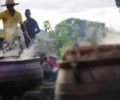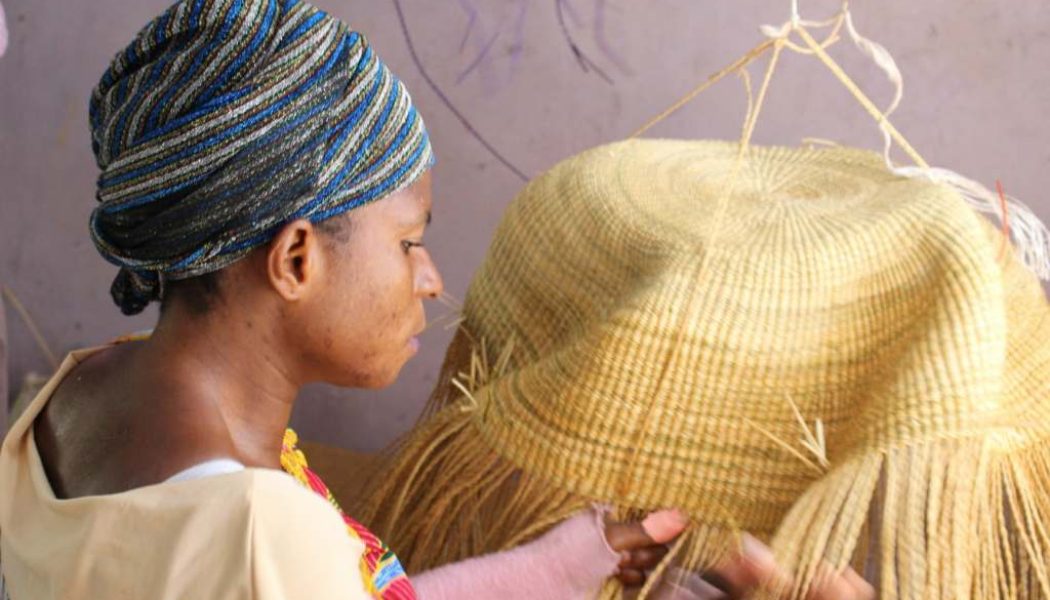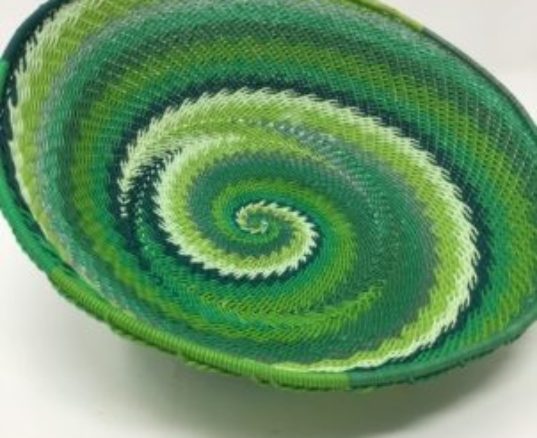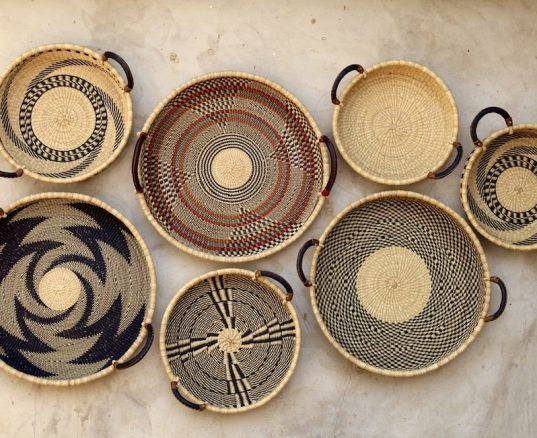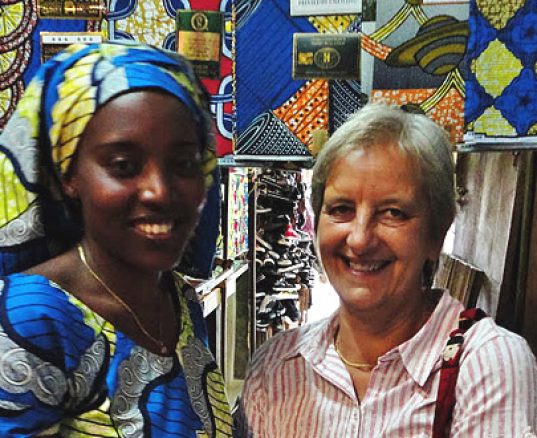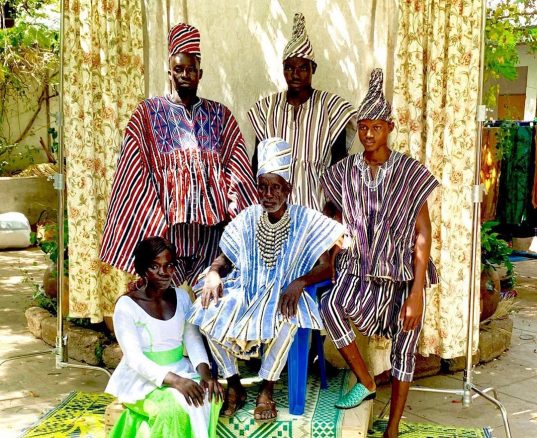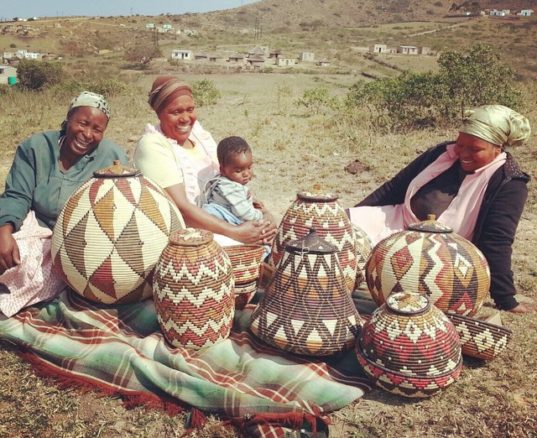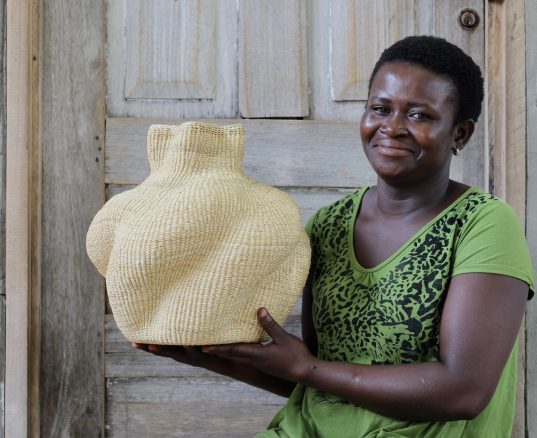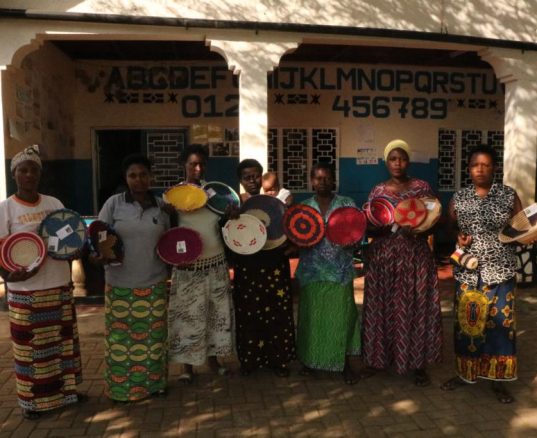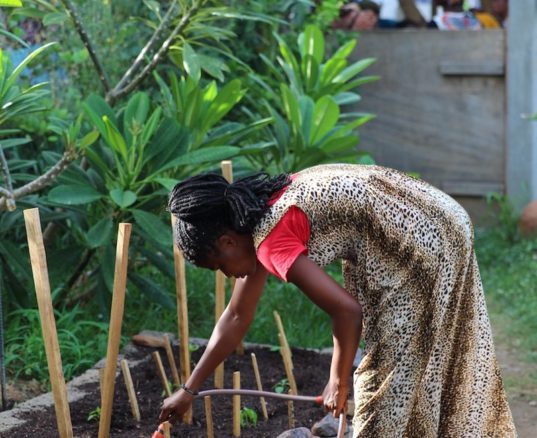To weave a finely woven 16″ Baba Tree ‘Round’ basket it takes about 25,000 ‘knots’ – where warp meets weft – to complete the basket up to the point before the ‘coil’ starts.
The weavers will complete the base of the basket and weave about three inches up the sides.
Most weavers will then turn the basket over and attach a piece of string to the center of the base and attach the string overhead so that the baskets hang in front of them.
In this position, with the basket seemingly floating in the air, the weaver continues to weave the sides of the baskets up to the point where the coil joins the main body of the piece. The coil runs the circumference of the basket where the handles are looped through. The coil must be neat and strong with no spaces – or very little space – between the main body of weaving and the coil.
During weaving, the weaver constantly flicks water onto the basket or has the straw soaking in water for a short time. Again, this is to keep the straw malleable. With the coil, it is no different. The thicker straw that they utilize for the coil is constantly dampened as the weaver pulls hard to compress the straw around the coil.
Once a weaver has completed a neat and strong coil, they take a razor blade and trim all the superfluous straw from the basket – or they will do this a few times during the course of the job. If this job is done very well, you will see very few extraneous bits of straw sticking out from the basket once a customer has soaked the basket for reshaping.
If the weaver was sloppy with this process, you will see a lot of straw sticking out after the basket has dried after it has been reshaped with water. It’s hard for us to pick up on this sloppiness when we are buying.
You can use scissors to cut off these pieces. Then, a neat and very strong handle has to be constructed. This is not an easy task – especially for round baskets that will be subjected to strength testing by the Baba Tree.
The handle has to be as smooth as possible so our leather guys can achieve a clean and neat finish on the handle. The weavers are supposed to bring baskets to us with the handles bone dry though this rarely happens. We need the handles to be dry in order to strength test them simply by pulling on them very hard. You can’t do that when the handle is wet.
The weavers can’t wait three days for the handles to dry before bringing them. They want to get paid ASAP. If the baskets are brought with wet handles we pay the weavers for the baskets but deduct money for the handles. We then let the handles sit in a special drying room to sit for three days. After three days we strength test the handles and if they pass the weaver is given the balance owed for the baskets.
If the handle doesn’t pass, we keep the deducted money and use it to pay one of our handle specialists to reconstruct the handle. Often you will see low quality Bolga baskets where the handle obviously isn’t strong to the point where a piece of thin nylon rope, running underneath a very sloppy leather job, tied to each end of the handle in a vain attempt to give the handle strength.
Currently, we are encouraging many of our weavers to bring the baskets without handles, especially if they are not good at doing handles – so they don’t waste their time, and straw, on handles that never pass our test.
The loops that you see jutting from the handles on our round baskets were originally designed to hold open wine bottles upright in the basket. The round basket design was, after all, introduced by Europeans. Nowadays, none of the weavers know what the loops are for and very few baskets have loops in the exact dimensions needed to support an open wine bottle upright.
To weave a high quality 16” Baba Tree ‘Round’ basket takes about 2.5 to 4 days – which includes straw preparation.
Once the basket handles are completely dry the baskets are given to the leather team who will then strength test the handles, again, before applying leather to them.
The leather team are paid very well (they are paid by the piece) so that they work at a pace that results in fine quality work. They are not permitted to work at the speed of light and do sloppy work, so that they can fatten their wallets. Once the leatherwork is complete, the handles are allowed to dry before being put into storage.
Only the best quality goat leather is purchased.
The leather scraps and offcuts are used to make the rope for hats. Scraps are given to the rope makers and then they sell the ropes back.
The Baba Tree has been working with the same leather team for almost 15 years.
Baba Tree don’t do ‘vegan’ products because the leather on the basket handles holds everything in place and makes the handles much stronger. If leather wasn’t used then the integrity of the handle would be compromised. The handle might break or the straw will unravel.

